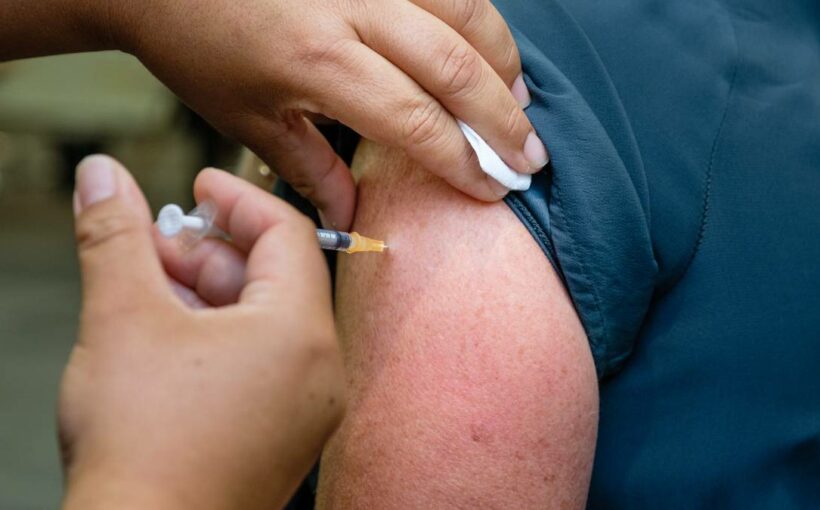Prime Minister Jacinda Ardern has suggested New Zealand could reach herd immunity to Covid-19 by the end of this year, following a nationwide vaccine roll-out.
But what does herd immunity actually mean?
Simply put, it’s when enough of a population has immunity – either from vaccination or a past infection – to stop uncontrolled spread.
While it doesn’t make any single person immune, it means that a virus is no longer easily jumping from person to person, helping to protect those who are still vulnerable to catching it.
“It means you have enough people in a community, who can’t be infected, to break the chain of transmission,” University of Auckland vaccinologist Associate Professor Helen Petousis-Harris said.
Director general of health Dr Ashley Bloomfield has indicated a vaccination target of 70 per cent of the population, which experts say would be at the lower end of the threshold to achieve herd immunity.
That’s led some commentators to suggest that vaccine polls, showing a third of Kiwis are either hesitant about getting a Covid-19 jab or are against it, do not bode well for reaching the target.
But scientists stress there’s no “magic number” that would get us there.
That’s because herd immunity depends on multiple factors – and not just the proportion of people vaccinated.
It also accounts for the level protection given by the vaccine, the infectiousness of the virus, and the environment that the virus is circulating in.
Thus, the threshold for achieving herd immunity could move up or down, at a given time.
Petousis-Harris said a related measure was the R0, or basic reproductive number, of a virus.
That represented the average number of people infected by one infectious person, and the R0 value could increase when prevention measures like social distancing weren’t in place, and fall when they were.
“If we were doing all of those things, we could have herd immunity with a lower number of people vaccinated,” she said.
“But when you change that, you increase the infectiousness, then you need a higher proportion of people who are immune.”
Another factor with the potential of pushing up both the R0 value, and the point of achieving herd immunity, was the emergence of more transmissible strains like the B.1.1.7 or UK variant.
Studies have suggested that variant wasn’t only 50 per cent more transmissible – but potentially came with a longer infection time.
“Therefore a single person can go on to infect more people just by virtue of breathing virus for longer,” Petousis-Harris said.
More such high-risk variants were expected to evolve before the pandemic ended.
“This is why that magic herd immunity number might have to change accordingly,” she said.
“I’ve seen discussions with experts where 70 [per cent of the population] has come up, but there are other estimates as well.
“So I don’t think we know enough about this virus to pin herd immunity to any number.”
Could we learn anything from other diseases?
She said we could draw some hope from previous measles campaigns, despite a recent outbreak.
“Measles is unbelievably infectious – but the measles vaccine is unbelievably effective.”
Two doses of the vaccine gave 99 per cent protection against measles – and the latest Ministry of Health data showed 90 per cent of 2-year-olds were immunised.
Fortunately, Pfizer’s Covid-19 vaccine, set to be rolled out this year, had a similarly high efficacy.
“So, with very, very, high coverage, we can get there,” she said.
“But I’d also point to influenza. The flu doesn’t have such a good vaccine, but it’s not as infectious compared with measles.
“So you can vaccinate a lot lower proportion of people, and still achieve some level of herd immunity.
“I’d expect that Covid-19 comes in the middle somewhere.
“If we had a flu vaccine as good as the Covid-19 vaccine, you wouldn’t need to vaccinate 95 per cent of people to stop the flu.”
Source: Read Full Article

/cloudfront-ap-southeast-2.images.arcpublishing.com/nzme/W4GXSDI6NDQUJRLG35TANC564M.jpg)
/cloudfront-ap-southeast-2.images.arcpublishing.com/nzme/JVOVITCVSKU6AGSOPXOBCYH2AY.jpg)